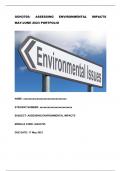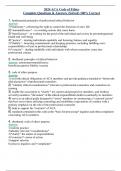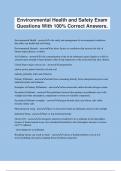Exam (elaborations)
ASSESSING ENVIRONMENTAL ASPECTS/ GGH3705 PORTFOLIO EXAMINATION 2023
- Course
- GGH3705
- Institution
- University Of South Africa (Unisa)
THIS WORK CONTAINS FULL ANSWERS FOR THE PORTFOLIO EXAMINATION FOR THE MODULE ASSESSING ENVIRONMENTAL ASPECTS: GGH3705. IT IS FULLY ANSWERED AND REFERENCED.
[Show more]












